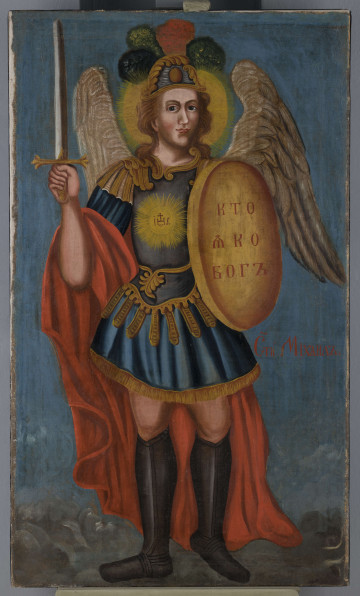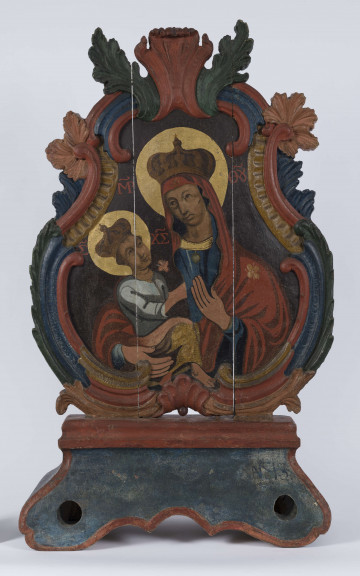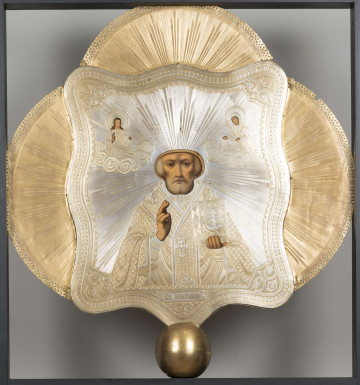
Saint Michael the Archangel
1801 — 1900
National Museum in Lublin
Part of the collection: Folk Art of the Lublin Region (17th–1st half of the 20th c.)
In addition to procession floats (see E/16801/ML), flags or processional images (see E/16797/ML) and crosses, which were kept in the church near the altar daily, played an important role during processions and religious ceremonies in the Western and Eastern Churches.
The mixing of Cyrillic and Latin inscriptions on this 19th-century double-sided cross indicates that it functioned in a Uniate environment. Probably due to the theme of the depictions - Crucifixion and Resurrection, it was used when leading funeral processions. The skull of forefather Adam at the base of the cross reminded mourners of the transience and fragility of earthly life, while the Risen Christ strengthened their faith in victory over death and eternal life.
Poland's eastern territories were once inhabited in large numbers by Catholics of the Latin rite, Orthodox Christians and Eastern-rite Catholics, or Greek Catholics, also known as Uniates. They used the Old Church Slavonic language and the Julian calendar and followed the liturgical forms of the Eastern rite, but at the same time recognised Catholic dogma and the supremacy of the Pope, although their clergy were not celibate. The Union flourished most at the turn of the 17th and 18th centuries. The Uniate Church underwent gradual transformation: organs appeared in temples, Stations of the Cross were placed, hymns and the rosary service were introduced and the Polish language started to be used. Mutual help and neighbourly ties, remembering the times of religious harmony, probably also permeated the funeral ceremonies. Hence the multiplicity of cultural elements on one small cross.
Author / creator
Dimensions
cały obiekt: height: 76 cm, width: 99 cm
Object type
painting
Technique
oil technique
Material
wood, oil-based paint
Creation time / dating
Creation / finding place
Owner
The National Museum in Lublin
Identification number
Location / status

1801 — 1900
National Museum in Lublin

1801 — 1900
National Museum in Lublin

1890 — 1910
National Museum in Lublin
DISCOVER this TOPIC
Museum of King Jan III's Palace at Wilanów
DISCOVER this PATH
Educational path